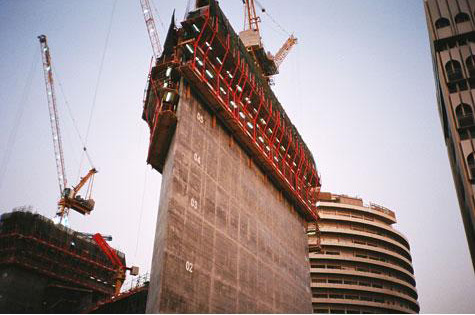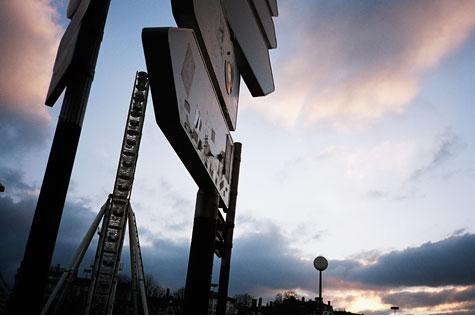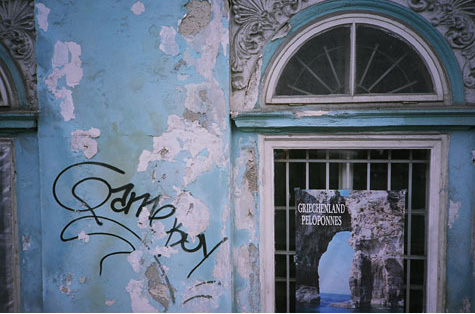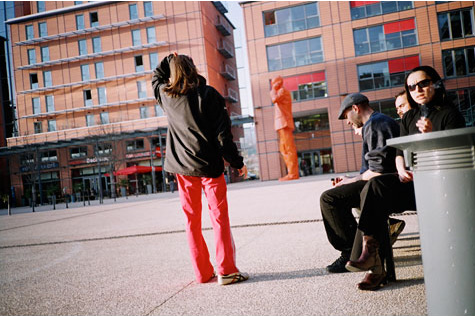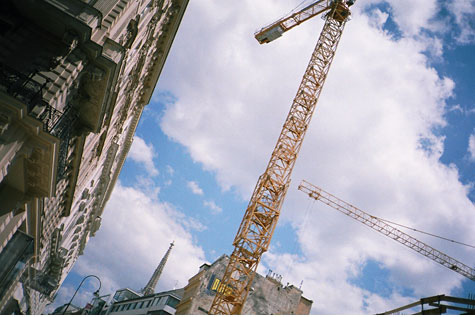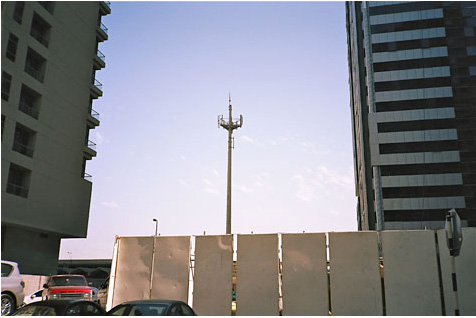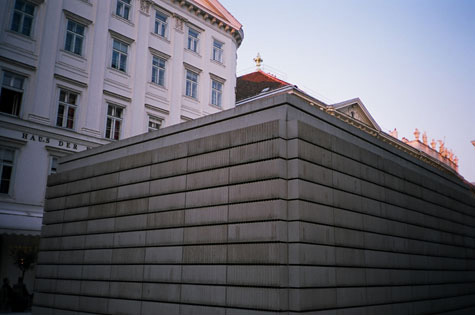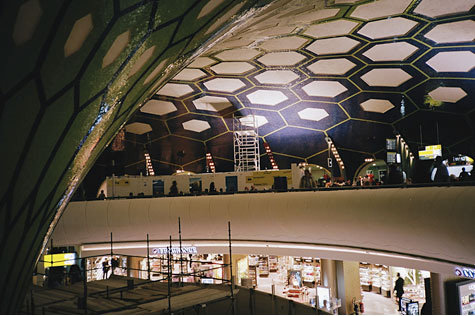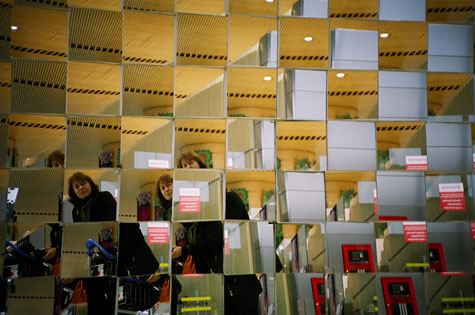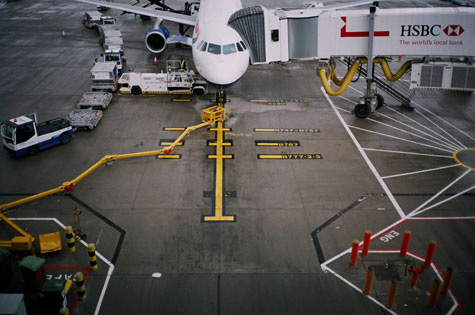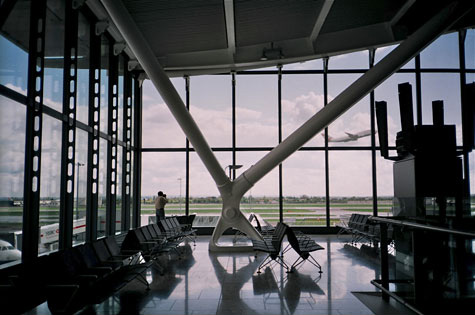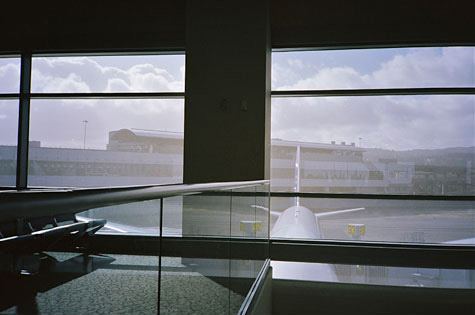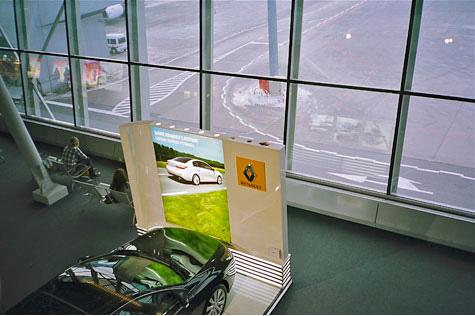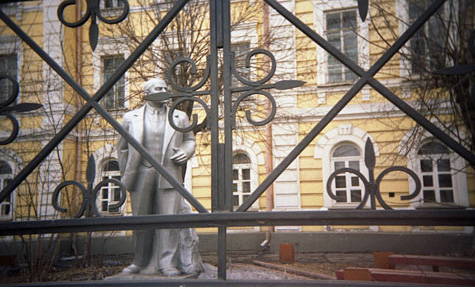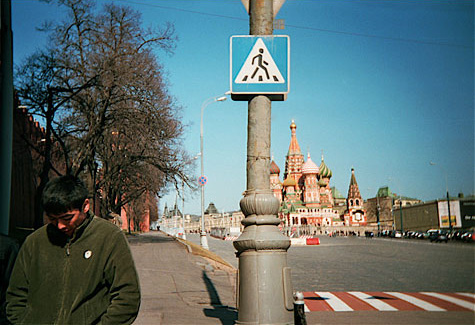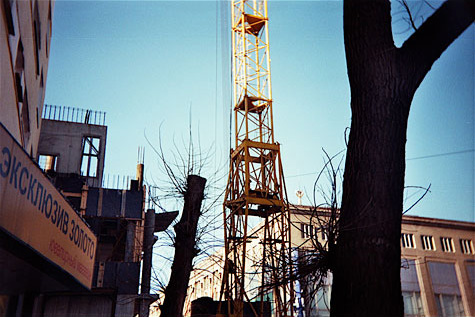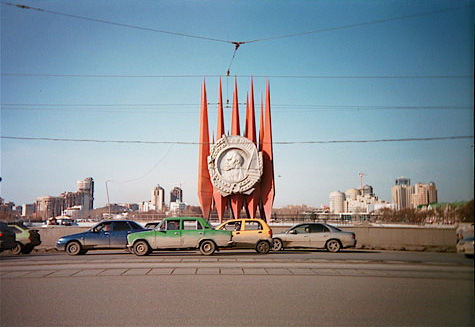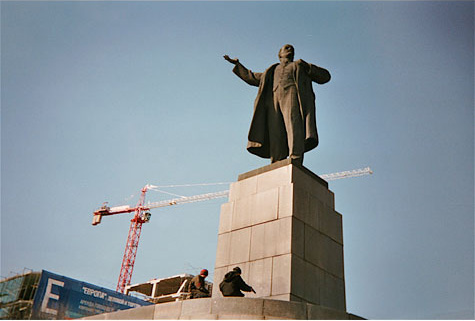September 22 – October 20, 2011
Artist's statement
Renata Breth, September 22, 2011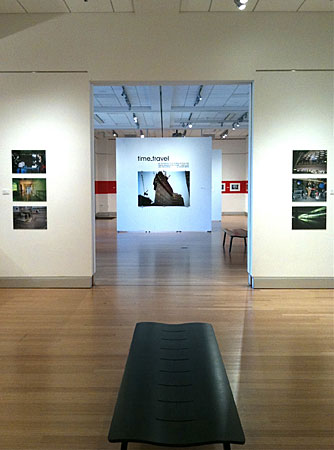
The exhibit “time_travel” addresses and reflects upon change in various manifestations: political, perceptual and spatial changes, as well as the nature of observation. The pieces in this exhibit include a number of different approaches to travel through time and therefore change.
Aspects of change represented in the exhibit are: “ZULUZEIT,” “time_pieces,” “CHANGE BLINDNESS” and “FORMERLY MONUMENTAL.” Except for ZULUZEIT, where the location and the UTC zone are indicated, works are untitled.
In “ZULUZEIT,” individual photographs capture the ever-changing movement through airports and the sight of viewing airplanes ready for takeoff or landing. I include the advertisements; the travelers and their luggage; the lounges, cafes and waiting rooms; the beauty and strength of the airplanes; and the architectural spaces seen as landscapes of their own.
In “time_pieces,” I collect images that show change through construction and use of new technologies. These engines of change are often seen as cranes or power lines. I witness technological change as a measure of time or the ravages of time. Human interaction in these photographs is at a minimum, and they sometimes involve religious messages, such as cathedrals dwarfed by cranes or satellites reaching toward the heavens.
The diptychs “CHANGE BLINDNESS” relate to studies of a perceptual phenomenon—the inability of the brain to notice visual events or changes when fully engaged in certain quests or tasks. I invite the viewer to compare two related images in order to detect how we choose to be blind to certain facts and therefore unwilling to change an opinion, based on what we “see” or “not see,” as in “I understand” or “I see your point.” For example, consider the way the Chinese and Tibetan students peacefully protest around the corner from each other. Could they not have achieved more if they had sat down and talked? I too need to see beyond what I photographed. Did I fully understand what both parties were engaged in? Do I thoroughly study the issues or just accept the sound bites from the news media? How do I observe the world around me? Am I fully engaged? Am I engaged to the point that I am blind to changes or events? Is the engagement due to habit, practice or fashion? For me the question is often not what did I see, but what did I miss or ignore and why?
 “FORMERLY MONUMENTAL” is a series I photographed while travelling through Russia with the distinct idea of reflecting upon the relationship of the former Soviet Union and the current Russia. I used photographic options to emphasize or diminish what was in front of me, depending on my “viewpoint” or the statement I tried to express. Many of the images have statues of Lenin or places of importance to Russian history. In Yekaterinburg, for example, I photographed a Soviet sculpture to purposefully eliminate most of newly built “Church of the Saints” by using an angle that increased the height and size of the sculpture in relation to the church and its golden domes. The windows of the exclusive luxury fashion Moschino store in Moscow’s Red Square reflect Lenin’s tomb on the opposite side of the square, in what seems to be an ultimate dominance of capitalism over a failed political system that aimed to create a classless society.
“FORMERLY MONUMENTAL” is a series I photographed while travelling through Russia with the distinct idea of reflecting upon the relationship of the former Soviet Union and the current Russia. I used photographic options to emphasize or diminish what was in front of me, depending on my “viewpoint” or the statement I tried to express. Many of the images have statues of Lenin or places of importance to Russian history. In Yekaterinburg, for example, I photographed a Soviet sculpture to purposefully eliminate most of newly built “Church of the Saints” by using an angle that increased the height and size of the sculpture in relation to the church and its golden domes. The windows of the exclusive luxury fashion Moschino store in Moscow’s Red Square reflect Lenin’s tomb on the opposite side of the square, in what seems to be an ultimate dominance of capitalism over a failed political system that aimed to create a classless society.
Because my camera was stolen in Mongolia, I purchased and used an inexpensive and photographically inferior point-and-shoot camera and had to guess what my photographic options were and how to predict the outcome. This was actually a wonderful experience because I “shot in the dark” with my eyes and mind “wide open,” guessing the outcome and later fully enjoying the results. Those results are what the average viewer might consider an inferior technical product, since the plastic lens distorted colors and focus. For me, however, the distortion creates a sense of past and history without a pompous celebration of infinite detail, precision and accuracy of representation. Viewers can engage in hide-and-seek throughout this series, as they attempt to find other hidden statues or messages.
ACKNOWLEDGMENTS
I would like to thank our dean, Ty Benoit, for her untiring encouragement, the Art Department Gallery Committee and my colleagues for their support of this exhibit.
I would also like to thank Mike Garcia, who did design the fabulous poster and card; Carla Stone and the students in the Art 53 Exhibit Design class for hanging the work; Corrine Haverinen for the web page; the Media Center and James Blue for technical support; Zara Pickett, Chris Vasquez and Steve Osborn for additional help; and finally Celeste Osborn for assisting me with almost every aspect of the exhibit.
